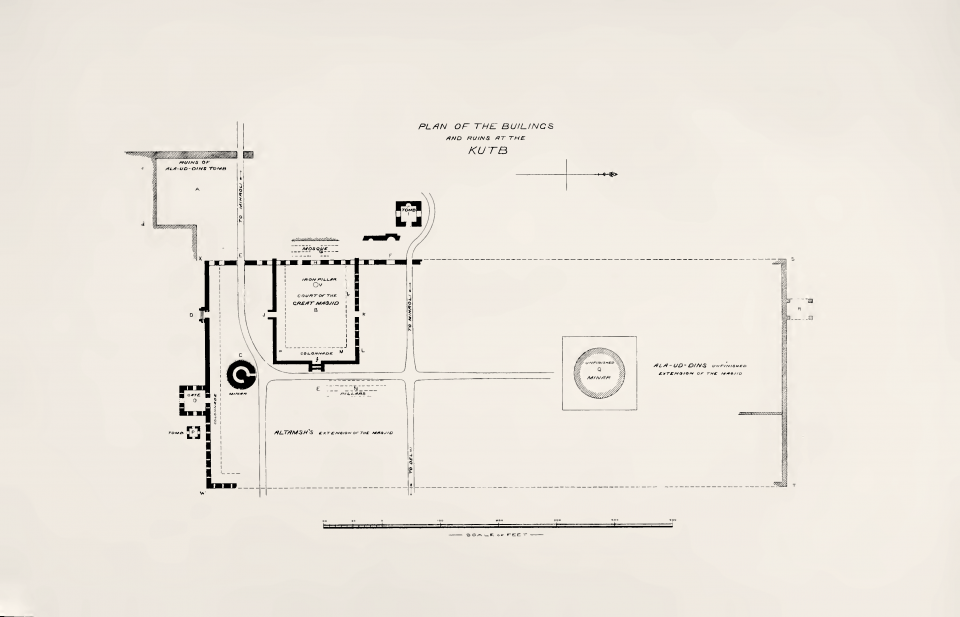THE Gateway built by Shams-ud-din in A.D. 1229, on the northern flank of the Jumrna Masjid is in a still more ruinous condition than that described on the preceding pages. The arches which formerly existed at the north extremity have fallen to the ground, and only two out of the five openings are still to be seen, namely, the central one and that contiguous to it on the left. The archway of the latter is still perfect, and the style of ornament which was applied to the spandrils is revealed in a still remaining portion of masonry; but of the centre arch a mass of rubble masonry, bared of its sculptured facing, alone remains to indicate the upper part. A few feet of sculptured Arabic characters testify to the fact that a band of inscription ran round the arch. The whole range of five arches when complete measured one hundred and ten feet. The centre Arch is twenty-four feet wide; the next two on either side measure thirteen feet and the flank openings were ten feet in width. In this Photograph the niche may be seen in the enclosing wall in rear of the gate, which led General Cunningham to believe that the supplementary Gateways of Shams-ud-din, of which this is the northern one, were for additional Mosques and not merely as an extension of the Masjid-i-kutb-ul-islam.
The wall at the back is quite plain, so is also the rear of the Gateway. Its thickness is eight feet, and the whole of the front surface is elaborately carved, or rather incised—the inscriptions in Nuskh and Kufic, and the ornamental arabesques being simply cut on the surface, which was left flat. The change in the character of the ornament from that on the central Gateway is remarkable, it is of a more severe and simple character. On either side and next to the pillars of the openings, are broad bands of ornament which run vertically upwards. At first sight the pattern seems to consist of an interlacing of geometric forms; on closer examination, however, Kufic letters will reveal themselves; and in the midst of what appears to be a strictly regular pattern, the native designer has most ingeniously introduced whole sentences from the Koran.

